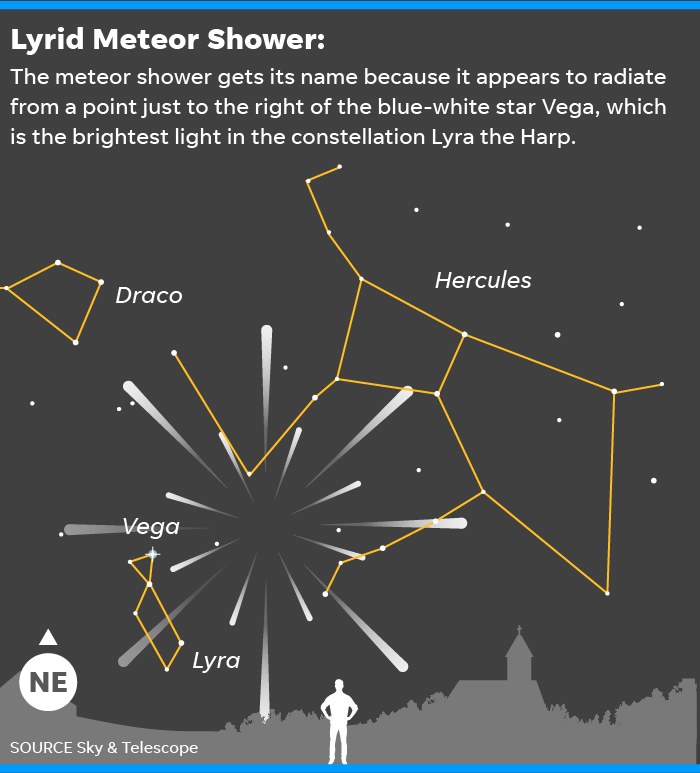How to watch 2023 Lyrid meteor showers in Oregon: When, where and how long it lasts

One of the year's first major meteor showers will light up the sky in April.
The Lyrid meteor shower, known for its fast and bright meteors, will begin on Saturday, April 15, and is expected to peak the nights of April 21-22.
The American Meteor Society describes the Lyrids as a "medium strength shower" that produces good rates of meteors for about three nights centered on the peak. NASA stated that the meteors don't often leave long, glowing trains of dust as they streak through the night sky but may produce bright flashes called fireballs.
If you plan to view the meteor shower in the Willamette Valley, here's what you should know.
What is a meteor shower?
Meteors are pieces of space debris left over from comets and/or asteroids that interact with our atmosphere when Earth passes through the debris trails left from comets coming around the sun, according to NASA.
The debris that created the Lyrids come from Comet C/1861 G1, also known as Comet Thatcher.
When can I see the Lyrid meteor shower?
The Lyrids will be active from April 15-29.
NASA expects the shower to peak April 21-22. The peak of the meteor shower is when people can see the most meteors. Generally, about 10 to 20 meteors are visible when the Lyrids peak.
What time of night is best to see the Lyrid meteor shower?
The Lyrids are best viewed when it is darkest, between about midnight and before dawn.
Where is the best place to see the Lyrid meteor shower?
NASA recommends people watch the meteor shower in an area far from city lights or streetlights and prepare for comfortable viewing by bringing a sleeping bag, blanket or lawn chair.
They suggest people lie flat on their backs with their feet facing east, then look up and view as much of the sky as possible. After about 30 minutes in the dark, people's eyes will adapt and begin to see meteors.
Where in the night sky is the Lyrid meteor shower?
The Lyrids' radiant, or the point in the sky where a meteor shower appears to come from, is near the constellation Lyra, according to NASA. Meteors appear near the constellation's brightest star, Vega.
The Statesman Journal contributed to this article.
This article originally appeared on Arizona Republic: Lyrid meteor showers in Oregon: How, when, where to watch

